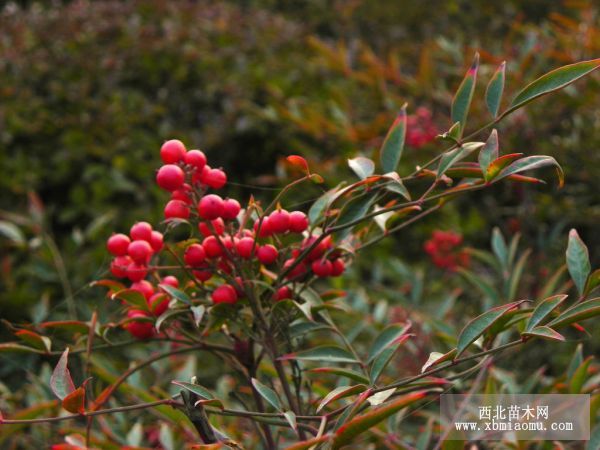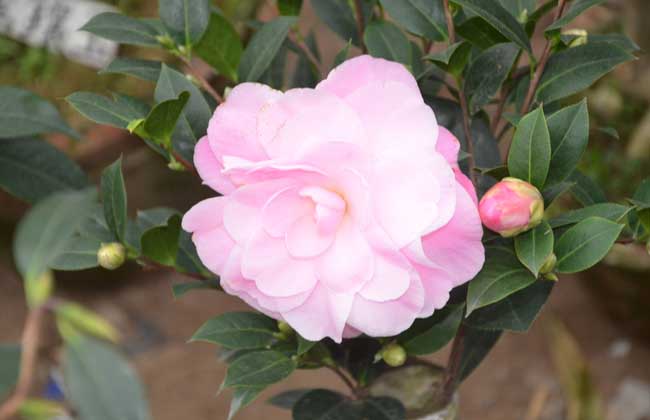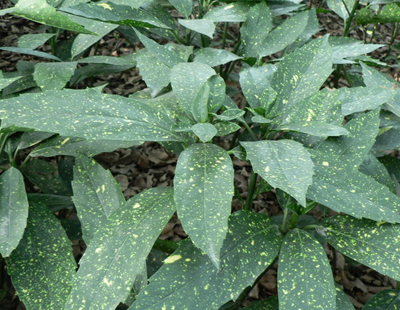Why doesn't Phyllostachys pubescens emerge for a long time when sowing?
The seed of Phyllostachys pubescens is a physiological post-mature seed with incomplete embryo development, which must be accelerated by moisturizing sand storage for a long time in order to promote its embryo to grow to normal size and then germinate. It is suitable to harvest the full fruit which is fully ripe and about to fall off from January to February, mix it with coarse sand, rub off the peel and pulp, float to remove the empty seeds, and get pure seeds.
After mixing the seeds with moist fine sand at 1:3, store them in small pots or large flowerpots, keeping the seeds moist all the time. If it is found that the sand becomes white and dry, the humidity can be increased by spraying water. Check every half a month to prevent mildew of the seeds. About September, the seeds can be split and exposed, and then sowed on the ready-made seedbed.
Generally, the row spacing is 15 cm 20 cm, the width of the groove is 10 cm, the depth of the groove is 5 cm 8 cm, the distance between seeds is 1 cm 2 cm, the thickness of the cover soil is about 0.5 cm 1.0 cm, and then cover with grass to moisturize. After about 2 weeks, 70% of the seeds were unearthed, uncovering the grass for 2 to 3 times, building a shed for shade, and strengthening the management of water and fertilizer, and the height of the seedlings in that year could reach 5 to 6 centimeters.
Proper protection against cold in winter, stay in bed for another year, then expand the distance and transplant in the second year, and the seedlings need 4-5 years to blossom and bear fruit. In order to avoid the trouble of storing seeds, the harvested red fruits can also be sowed directly on the seedling bed without treatment, with a groove width of 10 cm 15 cm, a depth of 5 cm, a row spacing of 20 cm, a cover of burning soil of 4 cm, and a moisturizing cover with grass, and the seedlings can not emerge until about September, during which the seedbed must be kept moist.
The new method of sowing and breeding of Phyllostachys pubescens, alias Tianzhu, is an evergreen shrub of Phyllostachys pubescens of the family Tilleraceae. Florescence from May to July, panicle terminal, flowers small, white; fruit from October to November, berries globose, bright red. Autumn and winter leaves turn red, plus red fruit, long-lasting, bright and lovely, are excellent garden plants for leaf and fruit viewing. At the same time, its root, stem, leaf, fruit can be used as medicine, fruit can treat pertussis, root can treat cold and enteritis, root and stem can treat rheumatism, fall injury, external use can treat scald. In addition, Phyllostachys pubescens is also an important plant for making stump bonsai and potted plants.

In this paper, a new method of budding and seedling raising of Phyllostachys pubescens in long-term sand storage is introduced. 1. Timely seed collection: from January to February, before the seeds of Phyllostachys pubescens are bright red and fall off, pick the fully ripe fruit on the strong growing plants, remove the handle of the fruit sequence, and soak the fruit in clean water for 2 to 3 days. After the pericarp is soft, mix it with river sand, rub it, remove the peel and pulp, then float with clean water to remove the shrunken grains, and after a little drying, you can store sand to promote budding. Second, post-ripening and accelerating germination: because Phyllostachys pubescens is a physiological post-mature seed with incomplete embryo development, it must be stored with wet sand for a long time so that it can successfully complete the post-ripening process before it can enter the normal germination stage. It usually takes 6 to 8 months from seed picking to germination. The specific method of storage and budding is to mix the washed and dried seeds with clean wet sand at the ratio of 1 ∶ 3 (the water content of the sand is held by hand and loose), store it in a water tank or enamel flowerpot and cover it with wood to prevent rodent harm. In the process of ripening to germination, check every 15 to 20 days. If the sand is found to be dry, it should be humidified by spraying water; if the seeds are moldy, clean and change the sand in time. In early September, the seeds were taken out and sown when they began to sprout and whiten. Third, soil preparation for bed: the seedlings of Phyllostachys pubescens avoid sun exposure and stagnant water at the roots, so the nursery should choose loose plots with side shade, back wind and dampness, and convenient drainage and irrigation. After meticulous soil preparation before sowing, the potting cake fertilizer was applied to make the nursery into a seedbed with a height of 10 to 20 centimeters, a width of 1 to 1.2 meters and a length of about 10 meters. In order to prevent the growth of weeds and affect the growth of seedlings, a herbicide made of 30ml dimethoate EC and 75kg water can be sprayed. This herbicide can not only control weeds, but also promote the growth of seedlings. Fourth, trench sowing: in the seedbed according to 15 cm row spacing trench, ditch depth 5 to 7 cm. Spread the germinated white mixed sand seeds evenly in the sowing ditch, the seed spacing is generally 2 to 3 cm, and then cover with a layer of fertile soil or burning soil with a thickness of about 2 to 3 cm, so that the seeds are not seen. The use of burning soil can prevent seedling diseases. Finally, spray the bed with a layer of straw or straw to moisturize. Fifth, sowing management: always spray water before emergence and keep the bed moist. Generally, more than 70% of the seeds break out of the soil 15 days later. The covered grass (or straw) should be removed 2 to 3 times. If the temperature is too high (more than 30 ℃), a shed must be built to shade the grass while uncovering the grass to create a cool and humid environment for the growth of seedlings. When the plant grows true leaves and the weather turns cool, you can remove all the mulch and exercise the seedlings; sprinkle a layer of plant ash on the seedling bed at the end of autumn to increase the cold resistance of the seedlings overwintering. For example, when the low temperature in winter is below 0 ℃, in order to prevent the seedlings from freezing, the seedling bed should be covered with plastic film, and in case of particularly cold weather, the grass curtain should be covered with plastic film. Remove the grass curtain and plastic film in March of the following year, strengthen fertilizer and water management, if the seedlings are too dense, but also transplant seedlings, 2 to 3 years later can grow into large seedlings for greening or potted ornamental. Bordeaux solution was used to control common leaf spot (black spot, brown spot); when leaf-eating pests such as leaf roll moth were found, 1000-fold solution of fenitrothion was used to control. Container Seedling cultivation and Management of Phyllostachys pubescens
Phyllostachys pubescens is an evergreen shrub of Berberaceae. It has small white flowers in June, globular berries, ripening in the middle of ll month, numerous fruits, bright red color, and does not fade after frost. Phyllostachys pubescens has a long history of cultivation in China. It is not only a commonly used foliage and fruit tree species, but also a traditional flower arrangement material, as well as potted plants and bonsai. Phyllostachys pubescens likes warm and humid climate and is more hardy. It is widely cultivated in China and is deeply loved by people.
Seed collection and treatment
The seedlings with strong growth, exuberant tree potential, strong resistance and no diseases and insect pests should be selected as the mother plant for seed collection. The time of seed collection is from the middle of ll to the first ten days of December.
The harvested seeds were soaked in warm water with disinfectant for 4 hours, then dried and sorted, and then germinated in indoor sand storage, sand piles covered with grass curtains and should be checked frequently.
Preparation and filling of nutritious soil
The fine soil and mature base fertilizer were prepared according to the formula of nutritious soil, and mixed and stirred according to proportion. the prepared nutritious soil was disinfected after 4 ~ 6 days, and the nutritious soil was mixed while spraying wine disinfectant, and then nitrogen, phosphorus and potassium fertilizer were added in proportion. the prepared nutritious soil should not be sand and sticky.
Filling nutritious soil is mainly filled with soil, which is 2cm ~ 3cm from the top of the nutrition bowl. it can not be overhead, but it should not be too tight, so as not to make the seeds in poor contact with the soil or the lack of air to affect respiration. After all, the nutrition bowl is placed neatly in the low bed, and then watered in the low bed, soaking the soil in the nutrition bowl through water seepage (the watering time depends on the condition of seed sand storage).
Sowing seeds
Sow seeds when the soil in the nutrition bowl is not wet and sticky and the seeds are white. Place 2 ~ 3 seeds in each nutrition bowl. After all the on-demand sowing is completed, cover the fine nutrient soil 1 cm ~ 2 cm.
Seedling management
Before emergence, the whole bed can be covered with grass curtain or plastic film which is easy to move, in order to improve the ground temperature. The covered straw curtain should be removed in time after emergence, and the covered plastic film should be ventilated and checked diligently. During this period, the soil should be kept moist to facilitate seed germination. It is best to spray wine with wine, otherwise the seeds and soil in the container will be flushed out. As the seedlings continue to be unearthed, the time for mulching and shading will be gradually reduced. If the mulch is not removed in time, the normal growth of seedlings will be affected.
The amount of water in the seedling stage should be sufficient to promote the growth of lateral roots, to control the amount of water to be irrigated at the suitable growth stage, and to promote the full quality of seedlings. In order to promote the multiple lateral roots and growth of seedlings, the effect of spraying water and proper dry-wet alternating watering is the best.
When the seedlings grow 2 ~ 4 true leaves, interseedling and supplementary seedlings are carried out. A healthy and strong seedling is retained in each container, and the extra seedlings come out and are planted in the excess container. Seedlings with dead and poor growth should be replanted. Water should be irrigated before interseedling and seedling replenishment, and then be watered and replenished after the water seeps dry, so that the root system of the seedling will not be damaged.
The nutrition needed for container seedlings not only comes from the nutritious soil, but also needs to be fertilized continuously at the seedling stage to meet the nutrient needs of seedlings at different stages, such as topdressing when the seedlings are shelled. Before the fast-growing period, if the base fertilizer is insufficient, it is necessary to topdressing nitrogen and phosphorus fertilizer, once every one month or so, but less fertilizer each time, and watering in time after topdressing. During the fast-growing period, the concentration of fertilizer should be controlled when topdressing to avoid burning seedlings.
- Prev

Planting method of Camellia
Camellia planting method, camellia originated in China's Yunnan-Guizhou Plateau, no severe cold in winter, no heat in summer, more rainfall, high air humidity, soft sunshine, no dry wind, and the soil is acidic. It is relatively easy to cultivate camellias in the south, but the climate and soil in the north of China are just the opposite to those in the south. therefore
- Next

Why is it difficult to reproduce and maintain Peach Leaf Coral?
Why is it difficult to reproduce and maintain Peach Leaf Coral? The family potted coral grows poorly and the cuttings are not easy to take root, which is mainly due to the failure to fully understand and master the biological characteristics of the coral. Sajin peach leaf coral is a small shrub of Cornaceae. Its leaves are strangely shaped and brightly colored.
Related
- Fuxing push coffee new agricultural production and marketing class: lack of small-scale processing plants
- Jujube rice field leisure farm deep ploughing Yilan for five years to create a space for organic food and play
- Nongyu Farm-A trial of organic papaya for brave women with advanced technology
- Four points for attention in the prevention and control of diseases and insect pests of edible fungi
- How to add nutrient solution to Edible Fungi
- Is there any good way to control edible fungus mites?
- Open Inoculation Technology of Edible Fungi
- Is there any clever way to use fertilizer for edible fungus in winter?
- What agents are used to kill the pathogens of edible fungi in the mushroom shed?
- Rapid drying of Edible Fungi

